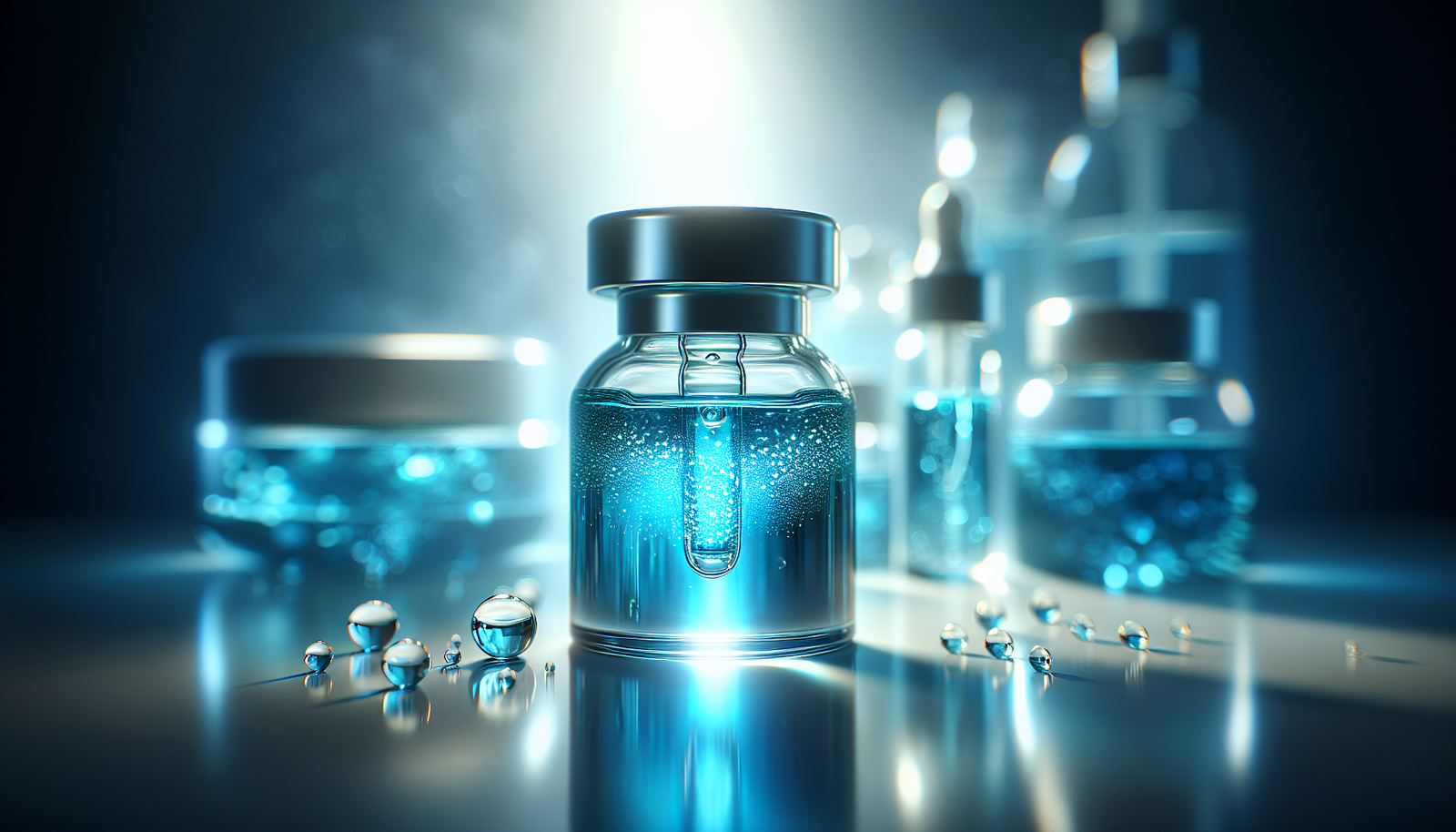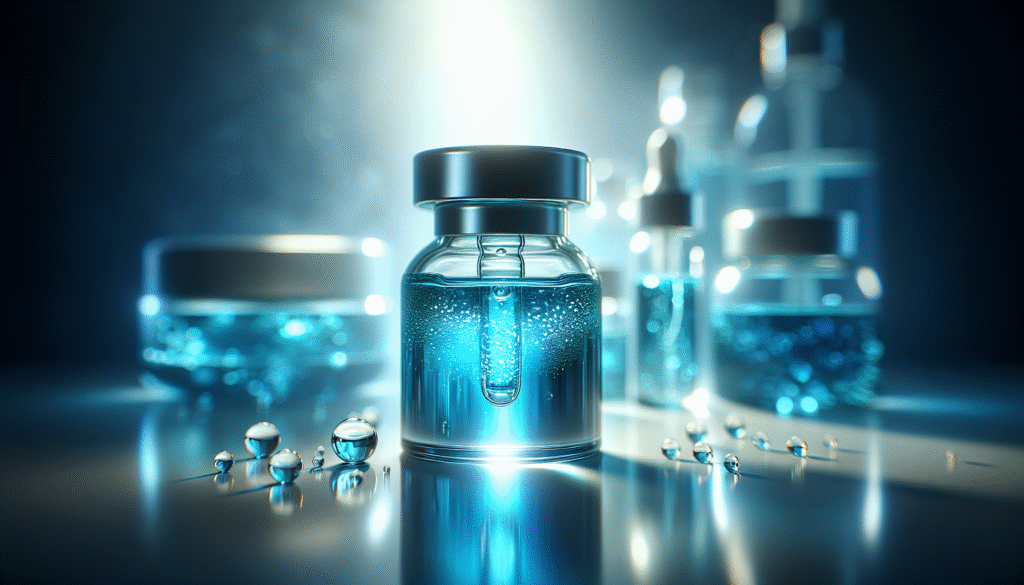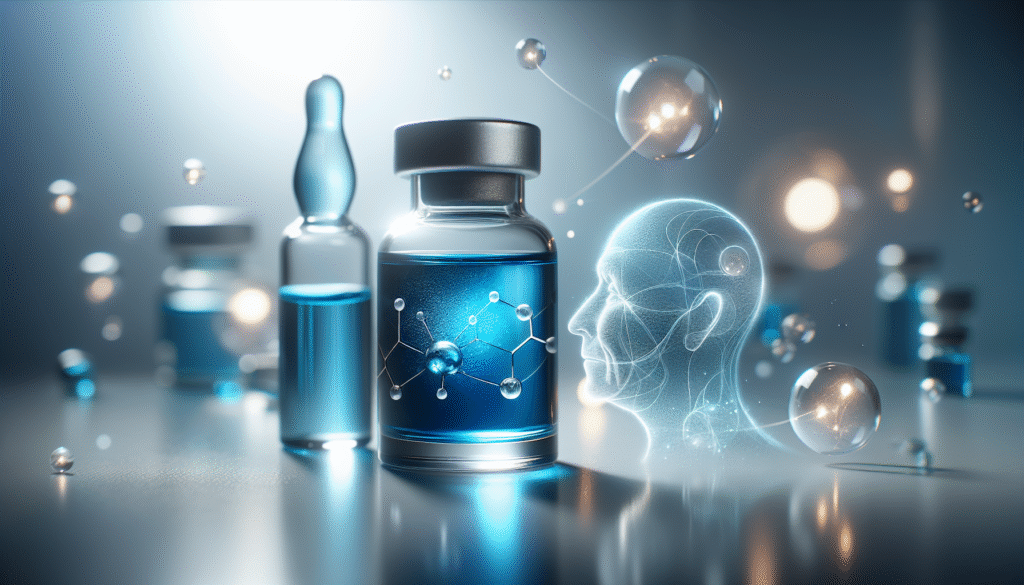
What comes to your mind when you think about anti-aging solutions? Are you imagining luxurious creams, invasive procedures, or perhaps revolutionary supplements? One compound that has recently garnered attention in the realm of anti-aging is Methylene Blue. This substance, known initially for its medical applications, is now being investigated for its potential anti-aging properties and overall health benefits.

Understanding Methylene Blue
Methylene Blue is a synthetic dye that has been used for various purposes since its development in the 19th century. Originally used as a textile dye, it later found applications in medicine, particularly as a treatment for methemoglobinemia—a condition where the blood’s ability to carry oxygen is impaired. The compound also exhibits antimicrobial and antiseptic properties, making it valuable in certain medical therapies.
The chemical structure of Methylene Blue allows it to transfer electrons effectively, which is a critical function in cellular processes. This indicates its potential as an effective agent in promoting cellular health and vitality, making it a fascinating subject in the study of anti-aging.
The Mechanism of Action
Methylene Blue functions by modulating several processes within the body. Its primary mechanism involves its role in mitochondrial function. Mitochondria are known as the powerhouses of the cell, responsible for producing adenosine triphosphate (ATP), the energy currency of the cell.
By enhancing mitochondrial function, Methylene Blue may improve energy metabolism and reduce oxidative stress, a major contributor to aging. Oxidative stress occurs when there is an imbalance between free radicals and antioxidants in the body, leading to cellular damage over time.
Antioxidant Properties
The antioxidant capabilities of Methylene Blue play a crucial role in its potential anti-aging effects. Antioxidants are molecules that neutralize free radicals, thereby protecting cells from damage. Methylene Blue can act as an electron donor, helping to stabilize free radicals and prevent the cellular damage that accelerates aging.
Research indicates that by preventing oxidative stress, Methylene Blue may contribute to the longevity of cells, extending their functional lifespan. This effect has led scientists to consider its application not only in the context of aging but also in neurodegenerative diseases associated with oxidative stress, such as Alzheimer’s and Parkinson’s.
Cognitive Enhancement
Another area of research surrounding Methylene Blue involves its potential to enhance cognitive function. Studies suggest that the compound may improve memory, learning, and overall cognitive performance. This enhancement is attributed to its role in energy production and neuroprotection.
The aging brain is susceptible to energy deficits, which can impair cognitive functions. By ameliorating these deficits, Methylene Blue may help maintain cognitive health as you age. Some preliminary studies indicate that even low doses can yield cognitive benefits, making it a compelling option for those concerned about age-related cognitive decline.
Methylene Blue: Applications in Anti-Aging
The integration of Methylene Blue into anti-aging protocols is a topic of growing interest. Below are some applications where the compound shows promise.
1. Cellular Regeneration
One of the most critical aspects of anti-aging is cellular regeneration. As cells age, their ability to divide and regenerate diminishes. Methylene Blue has shown potential in enhancing the regeneration of stem cells, which are vital for tissue repair and healing. By promoting stem cell vitality, this compound could play a role in maintaining youthful tissue health.
2. Skin Health
The skin is often a primary concern in anti-aging efforts. Methylene Blue has been investigated for its effects on skin cells, particularly in improving cellular respiration and reducing oxidative damage caused by UV exposure and environmental pollutants. Topical applications of Methylene Blue have shown promise in promoting skin repair and reducing signs of aging, such as fine lines and wrinkles.
3. Neuroprotection
As you age, the risk of neurodegenerative diseases increases. Methylene Blue has been studied for its neuroprotective properties, potentially delaying the onset of conditions like Alzheimer’s disease. By combating oxidative stress and supporting mitochondrial health in neurons, it may contribute to overall brain health and longevity.
4. Metabolic Health
Metabolic health is another crucial component of aging. Methylene Blue has demonstrated potential in improving insulin sensitivity and promoting fat metabolism. By enhancing metabolic functions, it could play a role in preventing age-related metabolic disorders such as obesity and type 2 diabetes.
Safety and Dosage Considerations
While Methylene Blue shows promise, it is essential to consider safety and appropriate dosage. Research indicates that low doses may be effective in providing benefits without significant side effects. However, higher doses can lead to adverse effects, including discolored urine and even potential toxicity.
Recommended Dosages
The effective dosage of Methylene Blue can vary depending on factors such as age, health status, and the intended use. Here’s a general overview:
| Application | Suggested Dosage (mg) |
|---|---|
| Cognitive Enhancement | 0.5 to 1.5 mg daily |
| Skin Health | Topical preparations (varied) |
| Metabolic Support | 0.5 to 2 mg daily |
| Neuroprotection | 0.5 to 2 mg daily |
Before incorporating Methylene Blue into your regimen, consulting with a healthcare professional is crucial. They can provide personalized advice based on your health and specific needs.
Potential Side Effects
Though generally considered safe in low doses, Methylene Blue can cause side effects in some individuals. Here are some potential side effects to consider:
Common Side Effects
- Urine discoloration: Methylene Blue can cause urine to turn a bluish color, which is harmless but may be alarming.
- Nausea: Some individuals may experience gastrointestinal discomfort or nausea, especially at higher doses.
- Skin irritation: When applied topically, it might cause irritation or allergic reactions in sensitive individuals.
Serious Side Effects
In rare cases, higher doses could lead to more severe effects, such as:
- Serotonin syndrome: This condition can occur if Methylene Blue is taken in conjunction with certain antidepressants, leading to dangerous levels of serotonin in the brain.
- Hemolytic anemia: This is a rare reaction that can occur in individuals with G6PD deficiency, leading to the destruction of red blood cells.
To minimize risks, always adhere to the recommended dosage and seek medical advice if you have pre-existing conditions or are on medication.

The Future of Methylene Blue in Anti-Aging Research
Ongoing research is critical in deepening the understanding of Methylene Blue and its implications for anti-aging. As science progressively uncovers the mechanisms and benefits associated with this compound, its applications could expand. Researchers are currently looking at:
Novel Delivery Methods
Advancements in drug delivery systems could enhance the effectiveness of Methylene Blue. Developing methods for better penetration into tissues, particularly the skin, could maximize its anti-aging benefits. Microneedling and nanotechnology are areas of interest for improving the delivery of Methylene Blue in topical formulations.
Combination Therapies
Combining Methylene Blue with other antioxidants or compounds aimed at promoting longevity may unveil synergistic effects. A multi-faceted approach to anti-aging could lead to more effective treatment protocols.
Wide-ranging Health Benefits
The implications of Methylene Blue extend beyond anti-aging. Investigations into its effects on various health conditions, including cancer, may result in novel therapies that could benefit society on a broader scale.
Conclusion
In a world where the secret to eternal youth seems forever elusive, Methylene Blue emerges as a promising contender in the fight against aging. From its origins in the medical field to its potential role in enhancing cognitive function and promoting cellular health, its story is just beginning.
As you consider the various avenues of anti-aging treatments, Methylene Blue may warrant a place in your discussion, albeit with careful consideration of its applications, dosages, and side effects. Ongoing research will undoubtedly clarify its role further, offering hope for a future where aging may become a more graceful process.
Being proactive in your health, seeking knowledge, and consulting healthcare professionals can empower you as you navigate the complexities of aging and wellness. Remember, the quest for anti-aging solutions is as much about embracing a healthy lifestyle as it is about seeking innovative compounds like Methylene Blue.